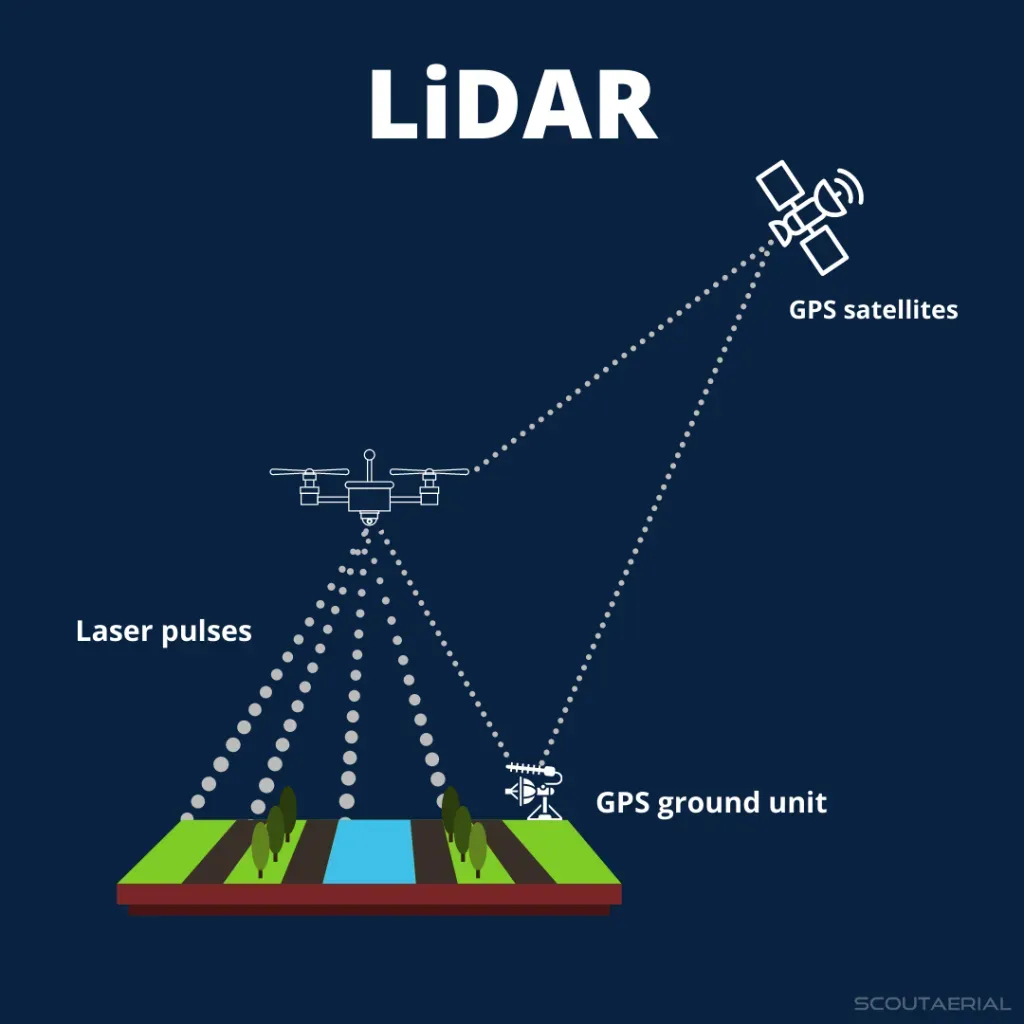About LiDAR:
- The Light Detection and Ranging (LiDAR) is a remote sensing technology that uses light in the form of a pulsed laser to measure ranges (or variable distances) of a sensor, usually mounted aboard an aircraft, to Earth’s surface.
- LiDAR data can be used to create high-resolution 3-D models of ground elevation with a vertical accuracy of upto 10 cm.
- Working
- LiDAR instrumentation comprises a laser, a scanner, and a GPS receiver.
- The rapidly firing laser travels to the ground where it hits vegetation, building, and various topographic features. This light is reflected or scattered, and recorded by the LiDAR sensor.
- The system calculates the light pulses’ two-way travel time to arrive at the distance between the terrain and the sensor.
- It processes this information with Global Positioning System (GPS) and Inertial Measurement System (IMS) data, to create an elevation map of Earth.
- LiDAR data is initially collected as a “point cloud” of all individual points reflected from everything on the surface, including structures and vegetation.
- The specific of how much light energy was returned to the sensor allows further identification of different features, such as vegetation, buildings, etc. For example, tree canopies, however dense they may be, allow some light to pass through and hit the ground.
- Its data can be further refined to produce what scientists call a “bare earth” Digital Elevation Model, in which structures and vegetation are stripped away.
- Applications
- It is used to generate precise, three-dimensional information about the shape of the Earth and its surface characteristics.
- This is obviously very useful information for geographers, policy makers, conservationists, and engineers.
- It has also shown potential as a tool of archaeological discovery.
Q1: What is Archaeology?
It is the study of human activity through the recovery and analysis of material culture. The archaeological record consists of artifacts, architecture, biofacts or ecofacts and cultural landscapes.
News: How remote sensing system LiDAR helped discover a lost Mayan city
Last updated on December, 2025
→ Check out the latest UPSC Syllabus 2026 here.
→ Join Vajiram & Ravi’s Interview Guidance Programme for expert help to crack your final UPSC stage.
→ UPSC Mains Result 2025 is now out.
→ UPSC Notification 2026 is scheduled to be released on January 14, 2026.
→ UPSC Calendar 2026 is released on 15th May, 2025.
→ The UPSC Vacancy 2025 were released 1129, out of which 979 were for UPSC CSE and remaining 150 are for UPSC IFoS.
→ UPSC Prelims 2026 will be conducted on 24th May, 2026 & UPSC Mains 2026 will be conducted on 21st August 2026.
→ The UPSC Selection Process is of 3 stages-Prelims, Mains and Interview.
→ UPSC Result 2024 is released with latest UPSC Marksheet 2024. Check Now!
→ UPSC Prelims Result 2025 is out now for the CSE held on 25 May 2025.
→ UPSC Toppers List 2024 is released now. Shakti Dubey is UPSC AIR 1 2024 Topper.
→ UPSC Prelims Question Paper 2025 and Unofficial Prelims Answer Key 2025 are available now.
→ UPSC Mains Question Paper 2025 is out for Essay, GS 1, 2, 3 & GS 4.
→ UPSC Mains Indian Language Question Paper 2025 is now out.
→ UPSC Mains Optional Question Paper 2025 is now out.
→ Also check Best IAS Coaching in Delhi

















